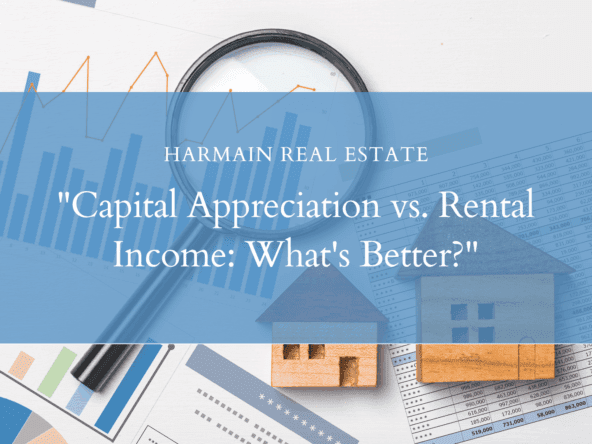In a world where boundaries blur and economies interlace, the pulse of global trends reverberates across industries far and wide. Pakistan’s real estate market, a dynamic sector with immense potential, is no stranger to this interplay of international forces. From shifting geopolitics to evolving consumer preferences, technological disruptions to environmental imperatives, the winds of change shaping the global landscape are cascading into the country’s property market in profound ways.
This article delves into the intricate web of global influences redefining the contours of Pakistan’s real estate sector, offering insights into both the challenges and opportunities that lie ahead. Whether you’re an investor, a developer, or simply an observer of the ever-transforming real estate domain, understanding these trends is key to staying ahead in an increasingly interconnected world.
Table of Contents
- Adapting to Economic Shifts: Navigating Real Estate Amid Global Uncertainty
- Cross-Border Investments: Opportunities and Challenges for Pakistan’s Property Market
- Urbanization and Sustainability: Embracing Global Eco-Trends in Local Development
- Tech-Driven Transformations: Harnessing Innovation to Shape the Future of Real Estate
- Q&A
- Future Outlook
Adapting to Economic Shifts: Navigating Real Estate Amid Global Uncertainty
| Global Trend | Adoption in Pakistan |
|---|---|
| Demand for eco-friendly homes | Increased focus on sustainable architecture and solar-powered housing |
| Shift towards flexible workspaces | Rise in shared office spaces and co-working hubs |
| Focus on digital property transactions | Development of real estate marketplaces and virtual property tours |
- tip: Investors should prioritize projects that align with future trends, such as energy efficiency and digital-centric solutions.
- Insight: A balance between affordability and innovation may hold the key for long-term market sustainability.
Cross-Border Investments: Opportunities and Challenges for Pakistan’s Property Market
Pakistan’s property market is increasingly attracting cross-border investments, fueled by interest from its diaspora and international investors seeking diversification. The nation’s strategic location combined with affordable prices in comparison to regional markets makes it a promising destination for investment. Though, navigating regulatory frameworks and ensuring clarity remains vital for enabling seamless investments. many foreign buyers are drawn to commercial hubs like Karachi, Lahore, and Islamabad due to promising rental yields and long-term growth potential.
- Opportunities: Emerging real estate hotspots, rising urbanization trends, and modern infrastructure development.
- Challenges: Complex taxation rules, fluctuating currency values, and bureaucratic hurdles.
| factor | Impact |
|---|---|
| Exchange Rate Sensitivity | Can affect ROI for foreign investors |
| Regulatory Transparency | Key for sustaining cross-border trust |
| Infrastructure Growth | Boosts investor confidence |
Urbanization and Sustainability: Embracing Global Eco-Trends in Local Development
As urban centers expand across Pakistan, the real estate sector is increasingly influenced by global eco-trends that prioritize sustainability. To align with international standards, modern urban developments are embracing green architecture and energy-efficient designs. Developers are integrating technologies such as solar panels, rainwater harvesting systems, and smart energy management into their projects. This not only addresses environmental challenges but also appeals to a growing demographic of environmentally conscious buyers. The emphasis on reducing carbon footprints is reshaping the urban planning narrative, blending innovation with more livable, eco-friendly spaces.
- Vertical Urban Expansion: High-rise mixed-use buildings reduce urban sprawl and optimize land usage.
- Smart Cities: Integration of IoT technologies for better resource management and sustainability.
- Sustainable Infrastructure: Use of locally sourced, recycled, or sustainable materials to lower construction impact.
Moreover, governments and private sector stakeholders are increasingly collaborating to meet these evolving demands. Consider the inclusion of waste recycling plans or green public spaces in newer housing societies—these have become key selling points in metropolitan hubs like Islamabad, Lahore, and Karachi. Below is a comparative snapshot of features defining the shift towards sustainability in the real estate landscape:
| Conventional Development | Sustainable Development |
|---|---|
| Conventional energy sources | Renewable energy adoption |
| Higher carbon footprint | Low-impact construction |
| Minimal green spaces | Eco-parks and public greenery |
Tech-Driven Transformations: Harnessing Innovation to Shape the Future of Real Estate
| Technology | Impact on Real Estate |
|---|---|
| IoT and Smart Buildings | Energy-efficient properties with advanced automation |
| Virtual Reality (VR) | Enhanced property visualization and remote tours |
| Blockchain | Transparent and secure property transactions |
| Big Data Analytics | Data-driven investment decisions |
Q&A
Global Trends Influencing Pakistan’s Real Estate: Q&A
Q: What global economic trends are impacting Pakistan’s real estate market?
A: International inflationary pressures and shifting monetary policies are reshaping Pakistan’s real estate landscape. Fluctuating foreign exchange rates directly affect construction costs, while foreign investment dips or surges based on global economic stability. The ripple effects push developers to adapt with innovative financing models in a bid to maintain growth.
Q: How is urbanization playing a pivotal role in real estate trends worldwide and in Pakistan?
A: The global shift towards urbanization fuels demand for smarter cities, and Pakistan is no exception. With urban populations on the rise, demand for mixed-use developments, vertical housing, and efficient infrastructure has surged. Developers in Pakistan are now racing to align with global concepts of eco-friendly urban planning and sustainable living.
Q: What role does digital conversion in real estate hold for Pakistan?
A: Globally, technology has revolutionized the real estate experience, from blockchain property transactions to virtual home tours. Pakistan’s market is catching up, embracing online property platforms and data analytics to streamline processes. This shift not only fosters transparency but also attracts overseas Pakistanis and foreign investors by simplifying real estate ventures.
Q: How do global environmental policies influence Pakistan’s real estate development?
A: Increasing global emphasis on sustainable development has spurred eco-friendly innovations in construction worldwide. Developers in Pakistan are slowly adopting green building standards, energy-efficient designs, and renewable materials. As demand for sustainable spaces grows, Pakistan’s real estate players are under pressure to compete internationally.
Q: What impact does geopolitical stability have on Pakistan’s real estate sector?
A: Global geopolitical shifts heavily impact cross-border investments in real estate. Within Pakistan, regions with political stability see higher property demand and valuations, while turbulent areas lag behind. Foreign investors frequently enough evaluate Pakistan’s geopolitical climate before committing, making enduring stability a cornerstone for market growth.
—
This creative yet neutral Q&A format balances global perspectives with Pakistan-specific insights for a more engaging narrative.
Future Outlook
As Pakistan’s real estate sector stands at the crossroads of global transformation, the trends shaping its future are both compelling and complex. From disruptive technology to shifting investment dynamics, these forces may redefine how we build, buy, and dwell in the world’s seventh-most populous country. while challenges persist, opportunities abound for those willing to adapt and innovate. The global pulse is strong, and Pakistan’s real estate journey is intertwined with it—where it leads next is a story still being written. The question is not only how Pakistan responds to these trends but how it leverages them to unlock its true potential.




